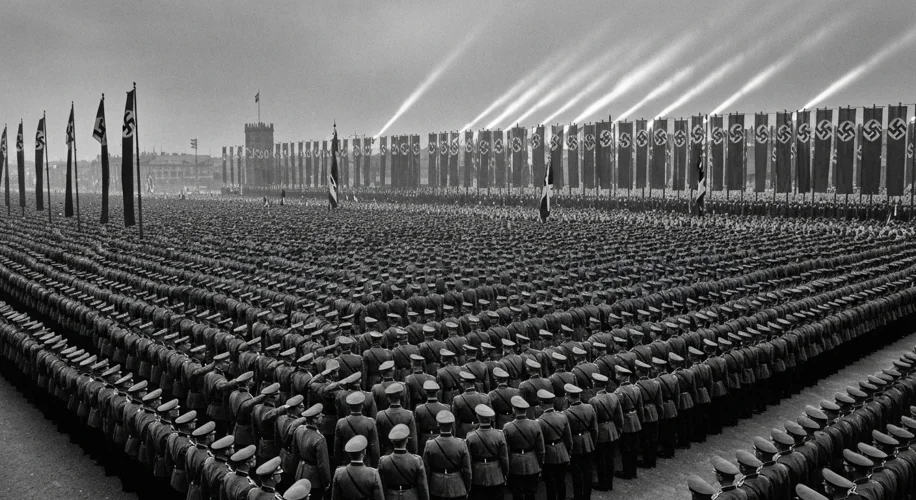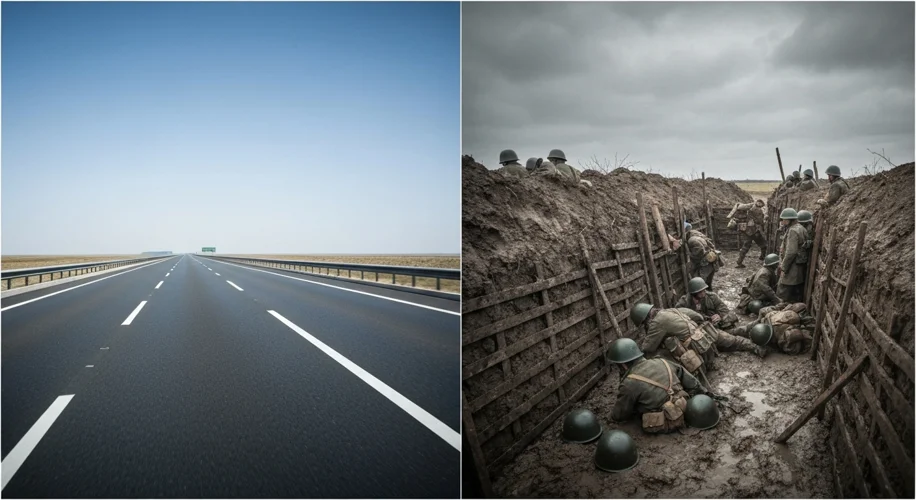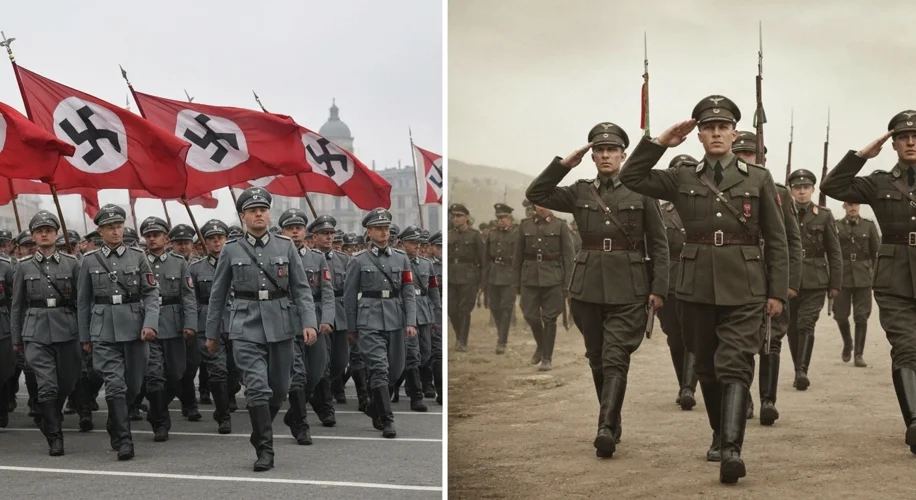The thunderous rallies, the synchronized marches, the imposing architecture – the regimes of Nazi Germany and Fascist Italy projected an image of unparalleled efficiency and order. From the gleaming autobahns to the meticulously organized propaganda, these totalitarian states seemed to have mastered the art of governance. But beneath this polished veneer, what was the reality? Was this efficiency a genuine achievement, or a carefully crafted illusion designed to mesmerize a disillusioned populace?
The story of this projected efficiency is deeply rooted in the turbulent aftermath of World War I. Both Germany and Italy, despite being on the winning side in the Great War, felt betrayed and economically crippled. Germany, burdened by the Treaty of Versailles, and Italy, denied promised territorial gains, were fertile ground for charismatic leaders offering radical solutions. Adolf Hitler and Benito Mussolini tapped into this discontent, promising a return to national glory, stability, and decisive action.

Hitler, in particular, understood the power of spectacle. The Nuremberg rallies, with their overwhelming displays of military might, uniformed precision, and fervent speeches, were not merely political gatherings; they were meticulously choreographed performances. The regime invested heavily in propaganda, with Joseph Goebbels skillfully employing every available medium to portray the Nazis as competent managers of the state. The Autobahn, initiated in the Weimar Republic but heavily expanded and promoted by the Nazis, became a potent symbol of German modernity and efficiency, even if its actual contribution to employment and infrastructure was often exaggerated.
Similarly, Mussolini’s Fascist Italy presented itself as a nation reborn. The “Battle for Grain” aimed at agricultural self-sufficiency, and ambitious public works projects like the draining of the Pontine Marshes were showcased as triumphs of Fascist will. Mussolini famously staged photo opportunities, often appearing in working-class attire, to foster an image of a leader deeply connected to the common man and relentlessly dedicated to rebuilding Italy.
However, a closer examination reveals significant cracks in this facade. While the Nazis did achieve some notable successes in rearmament and certain infrastructure projects, their economic policies were ultimately unsustainable and geared towards war. The rapid rearmament, while impressive, was achieved through deficit spending and the systematic exploitation of resources, including the plunder of occupied territories and the horrific persecution and murder of Jews and other minorities, whose property and labor were ruthlessly appropriated.

The Italian Fascist state, while initiating some infrastructural improvements, struggled with widespread corruption, bureaucratic inefficiency, and a persistent lack of industrial capacity. The “Battle for Grain” ultimately failed to make Italy self-sufficient, and the ambitious public works often suffered from mismanagement and budget overruns. Mussolini’s regime was also characterized by internal rivalries and a decentralized decision-making process that belied the image of absolute control.
Furthermore, the efficiency celebrated by these regimes came at an unspeakable human cost. The perfect order of the Nazi state was maintained through terror, repression, and the systematic extermination of millions. Concentration camps and death camps, the antithesis of efficient production, were central to the Nazi ideological and practical machinery. Similarly, Italian Fascism, while not reaching the genocidal scale of Nazism, was built on the suppression of dissent, political violence, and the subjugation of colonial populations.

The myth of Nazi and Fascist efficiency, therefore, was a powerful propaganda tool. It appealed to a desire for order and strength in times of chaos. Yet, the reality was far more complex and far more brutal. The efficiency they projected was often superficial, achieved through ruthless exploitation, unsustainable practices, and the horrific trampling of human rights. The gleaming facade concealed a deeply flawed and ultimately destructive system, a stark reminder that the appearance of order can often mask profound disorder and immense suffering.
In essence, the efficiency of Nazi Germany and Fascist Italy was a carefully constructed illusion, a powerful narrative designed to legitimize their rise to power and their brutal consolidation of it. While certain aspects of state organization were indeed present, they were overshadowed by the systemic inefficiencies, the inherent contradictions, and the catastrophic human toll exacted by these regimes.

